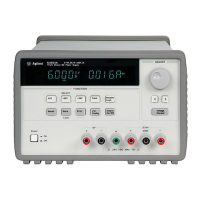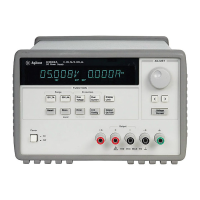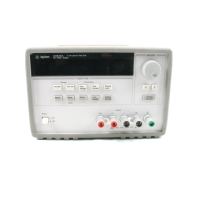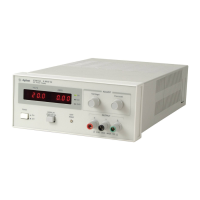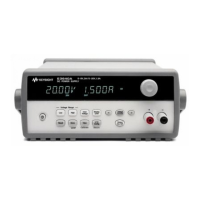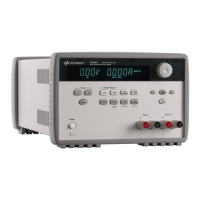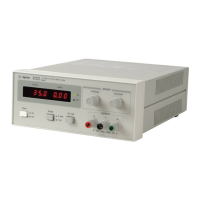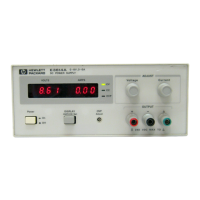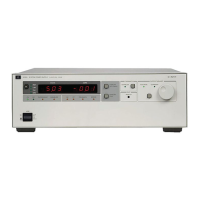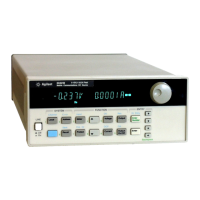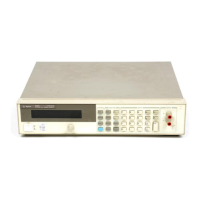Chapter 3 Calibration Procedures
Constant Voltage (CV) Verifications
52
7 Program the output voltage to full rated value (20.0 V)* or (50.0 V)** by sending
the command:
VOLT 20.0 (E3633A)
VOLT 50.0 (E3634A)
8 Record the output voltage reading on the digital voltmeter (DVM). The reading
should be within the limit of (20 V ± 20 mV)* or (50 V ± 35mV)**.
9 Readback the output voltage over the remote interface by sending the
command:
MEAS:VOLT?
10 Record the value displayed on the controller. This value should be within the
limit of (DVM ± 15 mV)* or (DVM ± 30 mV)**.
CV Load Effect (Load Regulation)
This test measures the change in the output voltage resulting from a change in
the output current from full to no load.
1 Turn off the power supply and connect a digital voltmeter between the (+) and
(-) terminals of the output as shown in Figure 3-1.
2 Turn on the power supply. Select the 20V/10A* or 50V/4A** range, enable the
output, and set the display to the limit mode. When the display is in the limit
mode, program the output current to the full rated value (10.0 A)* or (4.0 A)**
and the voltage to the full rated value (20.0 V)* or (50.0 V)**.
3 Operate the electronic load in constant current mode and set its current to
(10.0 A)* or (4.0 A)**. Check that the front panel
CV annunciator remains lit.
If not lit, adjust the load so that the output current drops slightly until the
CV
annunciator lights. Record the output voltage reading on the digital voltmeter.
4 Operate the electronic load in open mode (input off). Record the output voltage
reading on the digital voltmeter again. The difference between the digital
voltmeter readings in steps (3) and (4) is the CV load regulation. The difference
of the readings should be within the limit of (4 mV)* or (7 mV)**.
*For Agilent E3633A Model **For Agilent E3634A Model
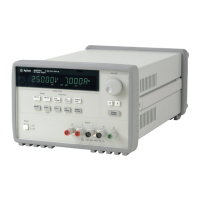
